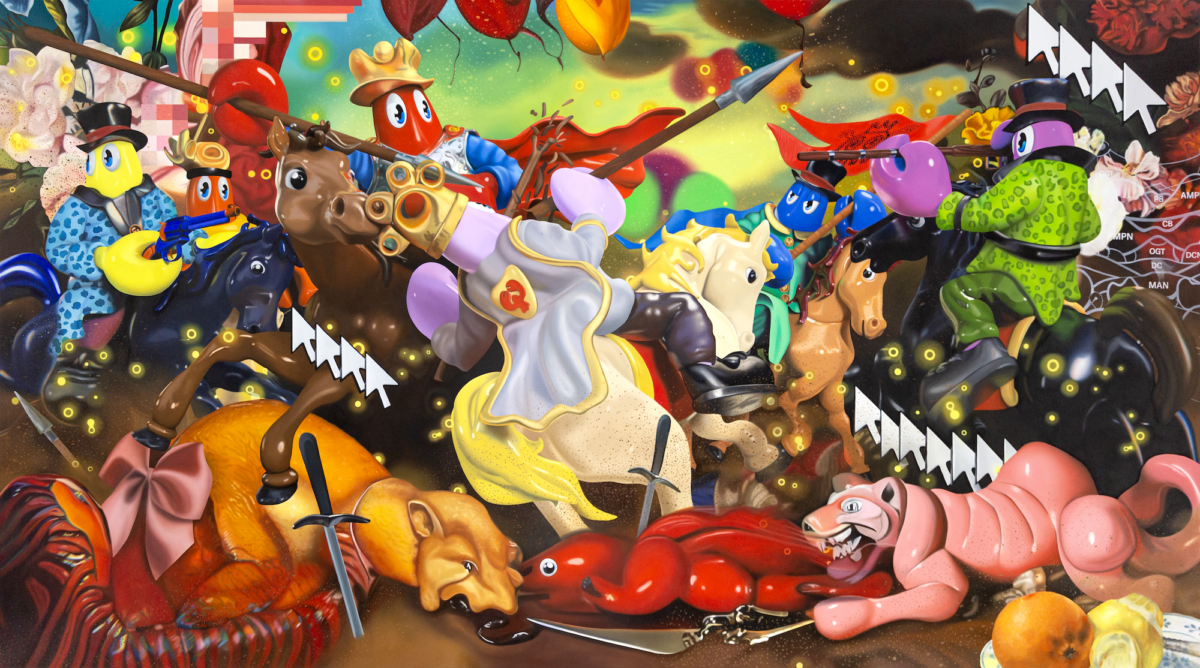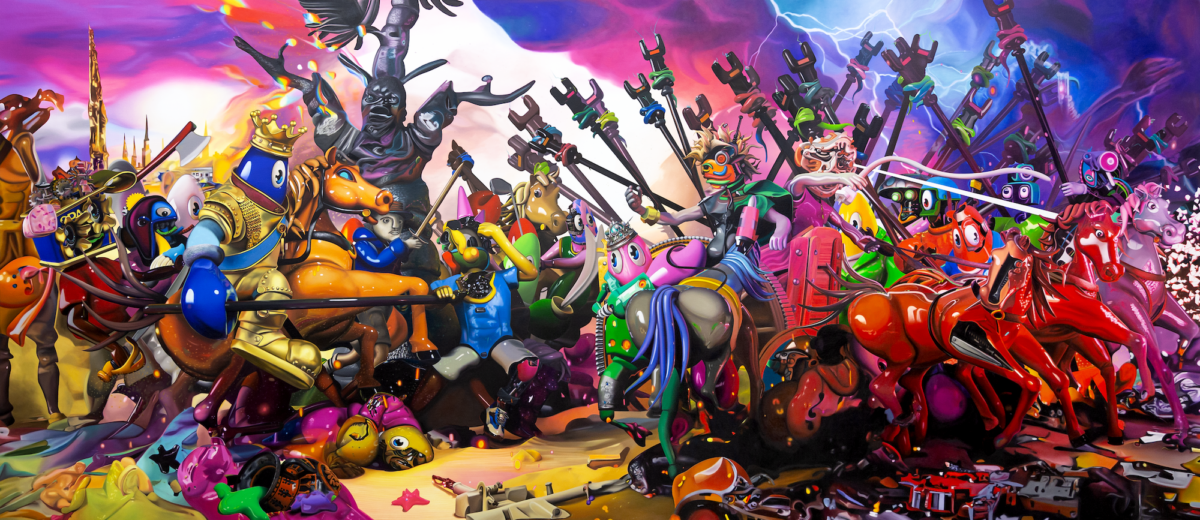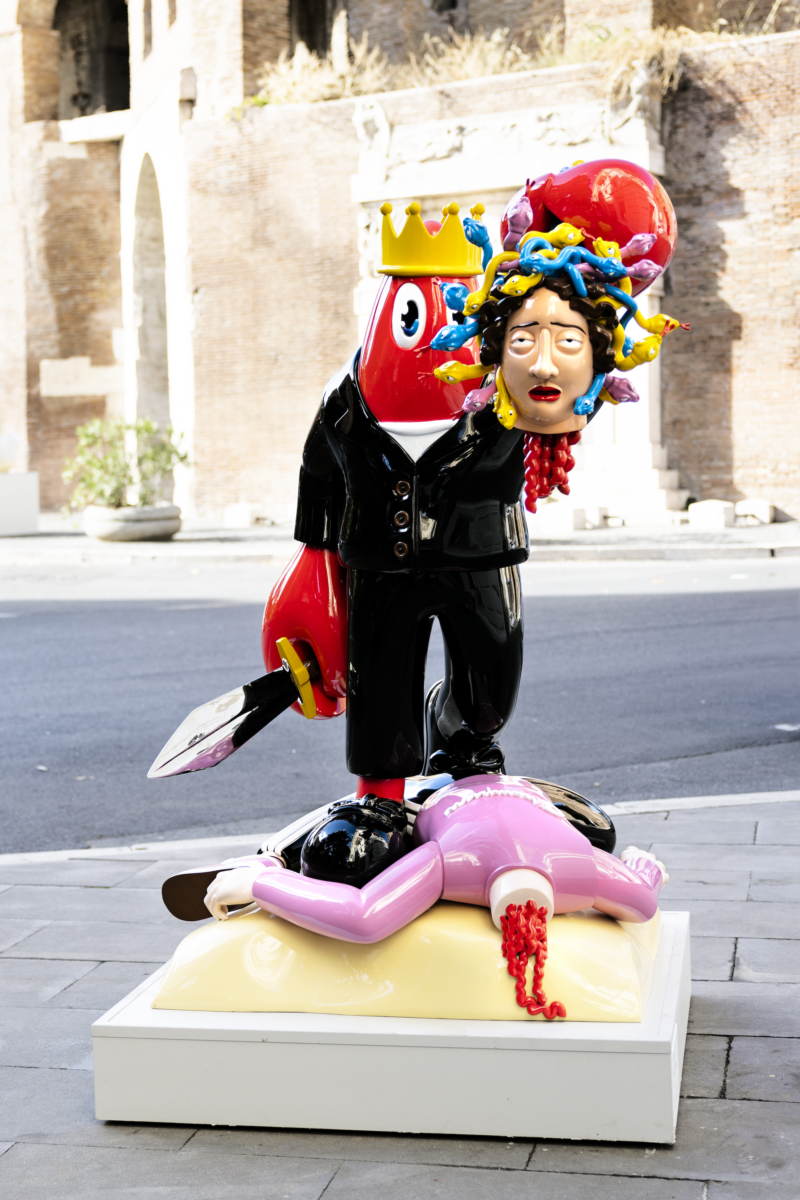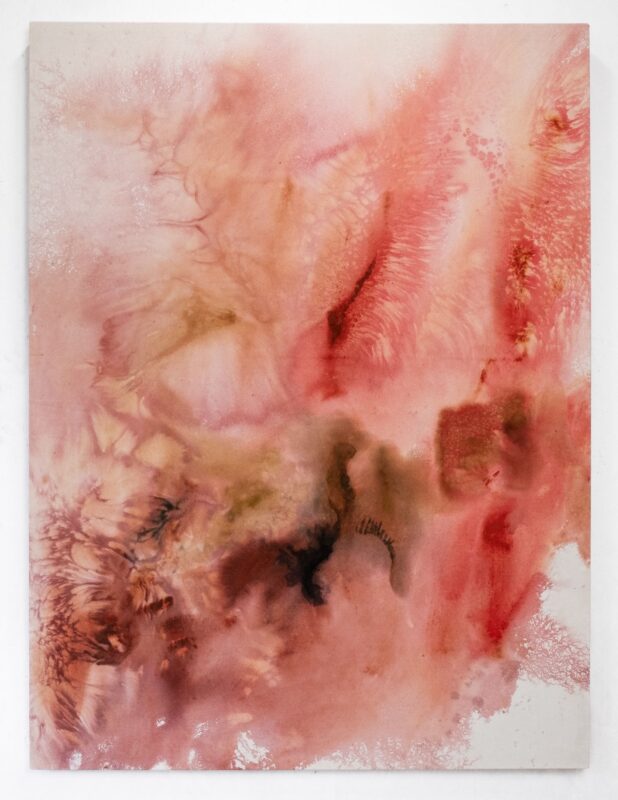
Old Masters meet AI in Philip Colbert’s new battle scene exhibition at Saatchi Gallery titled The Battle for Lobsteropolis the new exhibition opens on Friday 29th November 2024.
Known for his hyperpop history paintings, Colbert continues his signature battle scene series, where the lobster battles artificial intelligence in the retro-future world Lobsteropolis. In this solo show, Colbert’s iconic lobster travels through time and clashes with AI in reimagined historical battle scenes. The exhibition centres on two monumental AI-assisted paintings in which Colbert’s lobster faces off with the tech world. With these works, Colbert channels the grandeur of ancient battle motifs and Renaissance compositions, where heroic struggle and artistic legacy converge in a retro-futuristic, apocalyptic landscape. Colbert’s world is one where art history and digital innovation are constantly in flux, reflecting the ever-evolving tension between history and technological advancement.

Highlighting this epic theme, After Battle of Issus Mosaic reinterprets the famed “Alexander the Great” mosaic—a 2,000-year-old masterpiece rediscovered in Pompeii, and now housed at Museo Archeologico Nazionale di Napoli, where Colbert exhibited earlier this year. The artist adapts the composition, transplanting it into his dystopian Lobsteropolis, a place of both nostalgia and foreboding. The battle between Colbert’s lobster and an advancing force of AI avatars compels viewers to reimagine the timeless impact of the history of art as it encounters the digital revolution head-on.

The exhibition also features a series of sculptures that bring the drama of the battle scene to life, drawing on classical mythological figures such as the Centaur, Minotaur, and Medusa. By reinterpreting these legendary figures in his signature style, Colbert underscores the timeless appeal of mythology and its resonance in our own era.

I’ve been continually drawn to the theme of Old Master battle scenes,
says Colbert.
These paintings capture such a heightened, pivotal moment where the outcome defines history—whether the battle is won or lost. I use this powerful visual framework to stage my own ‘pop battle’ of aesthetics, a reflection of my place in a hyper-saturated world, where I’m constantly battling for meaning in a ‘hyper-pop’ soup.
My lobster persona gives me the freedom to explore the multi-layered dimensions of time, from the artistic blueprints of antiquity to the sci-fi visions of the future. My paintings are windows into a realm beyond time itself. The lobster has long symbolized time and mortality—alive, yet fixed in a state that transcends life and death. It’s a fitting symbol to travel beyond time.
Saatchi Gallery invites you to step into Philip Colbert’s lobster world in The Battle for Lobsteropolis, where past and future collide in a tribute to the endurance of art amidst the technological evolution of our times.
Philip Colbert, The Battle for Lobsteropolis, 29th November 2024 – 13th January 2025, Saatchi Gallery
About the artist
Born in Scotland and living and working in London, Colbert is often referred to as the “godson of Andy Warhol”. He has created a global following for his cartoon lobster persona and his masterful hyper-pop history paintings. His work powerfully explores the patterns of contemporary digital culture and its relationship to a deeper art historical dialogue.
After graduating with an MA in Philosophy from St. Andrews University, Colbert’s work has received international acclaim in museums and galleries worldwide for his energetic new approach to painting and pop theory. Following on from early Pop painters such as Richard Hamilton, Roy Lichtenstein and James Rosenquist, Colbert’s paintings cross high art themes from old master paintings and contemporary art theory with everyday symbols of mass contemporary culture, all narrated through the eyes of Colbert’s cartoon Lobster alter ego. He has been championed as a contemporary pop master by art world figures such as Charles Saatchi & Simon de Pury.







